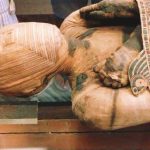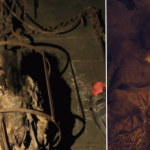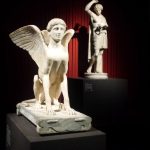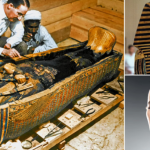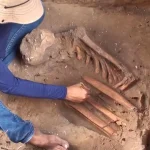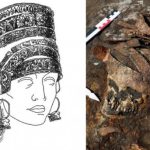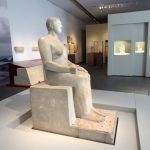Wennefer’s Magnificent Trapezoidal Sarcophagus (380–332)

Dating back to the period between 380 and 332 BC, the Sarcophagus of Wennefer stands as an extraordinary testament to ancient Egyptian craftsmanship and religious beliefs. This magnificent sarcophagus, crafted in an unusual trapezoidal shape, is adorned with intricate decorations expertly carved into the hard stone. Among its most striking features is the depiction of Wennefer’s ba, represented as a human-headed bird, gracing the lid with an aura of mystique and reverence.
The journey into the symbolism and significance of the Sarcophagus of Wennefer begins with an exploration of its distinctive form. Unlike the more common rectangular sarcophagi of ancient Egypt, Wennefer’s final resting place takes on a trapezoidal shape, adding to its allure and uniqueness. This departure from convention hints at the exceptional status of its occupant and invites speculation about the reasons behind this stylistic choice.
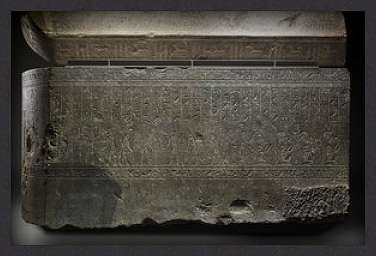
Central to the sarcophagus’s decoration is the portrayal of Wennefer’s ba, a concept deeply rooted in ancient Egyptian religious beliefs. The ba, often depicted as a human-headed bird, was believed to be the soul or essence of an individual, capable of transcending the physical world and navigating the realm of the afterlife. Its presence on the lid of the sarcophagus suggests a profound belief in the continuity of existence beyond death and the journey of the soul to the realm of the gods.
The intricate carvings adorning the Sarcophagus of Wennefer are not merely decorative but imbued with spiritual significance. Among the hieroglyphic texts inscribed on its surface are spells drawn from the ancient Egyptian funerary text known as the Book of the Dead. These spells were intended to guide and protect the deceased on their journey through the afterlife, ensuring a successful transition and transformation into an effective spirit.
Each spell contained within the Book of the Dead served a specific purpose, ranging from warding off malevolent forces to facilitating the judgment of the deceased before the gods. The inclusion of these spells on Wennefer’s sarcophagus underscores the belief in the importance of proper preparation for the afterlife and the desire to ensure a favorable outcome for the departed.
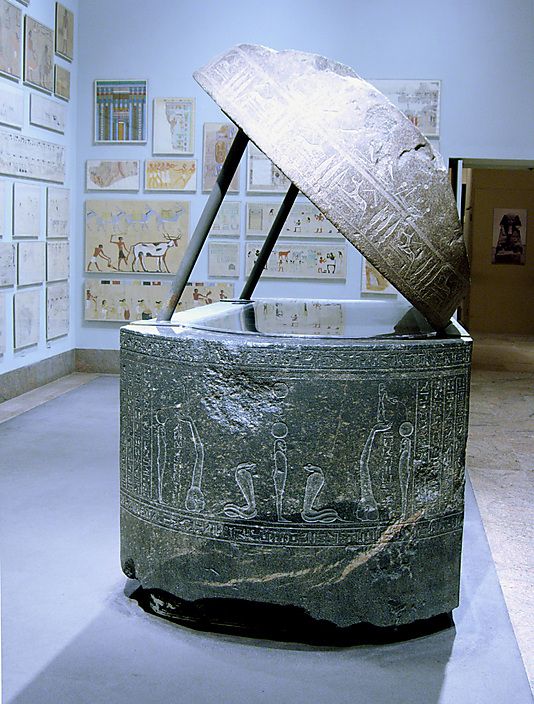
The Sarcophagus of Wennefer not only serves as a magnificent funerary vessel but also offers valuable insights into the religious beliefs and rituals of ancient Egypt. It speaks to the profound reverence for the afterlife and the meticulous care taken to ensure the well-being of the deceased in their journey beyond the mortal realm. Moreover, it reflects the skilled craftsmanship and artistic mastery of the ancient Egyptian artisans who crafted it, demonstrating their ability to transform raw stone into objects of profound beauty and spiritual significance.
The discovery and study of the Sarcophagus of Wennefer continue to captivate scholars and enthusiasts alike, offering a window into the mysteries of ancient Egyptian civilization. Its enigmatic symbolism and elaborate decoration invite interpretation and speculation, prompting questions about the identity and life of Wennefer, as well as the beliefs and practices of the society that honored him in death.
As we marvel at the intricate carvings and timeless beauty of the Sarcophagus of Wennefer, we are reminded of the enduring legacy of ancient Egypt and the eternal quest for understanding the mysteries of life and death. In its silent majesty, this remarkable artifact stands as a silent witness to the passage of time and the enduring power of human creativity and spirituality.


